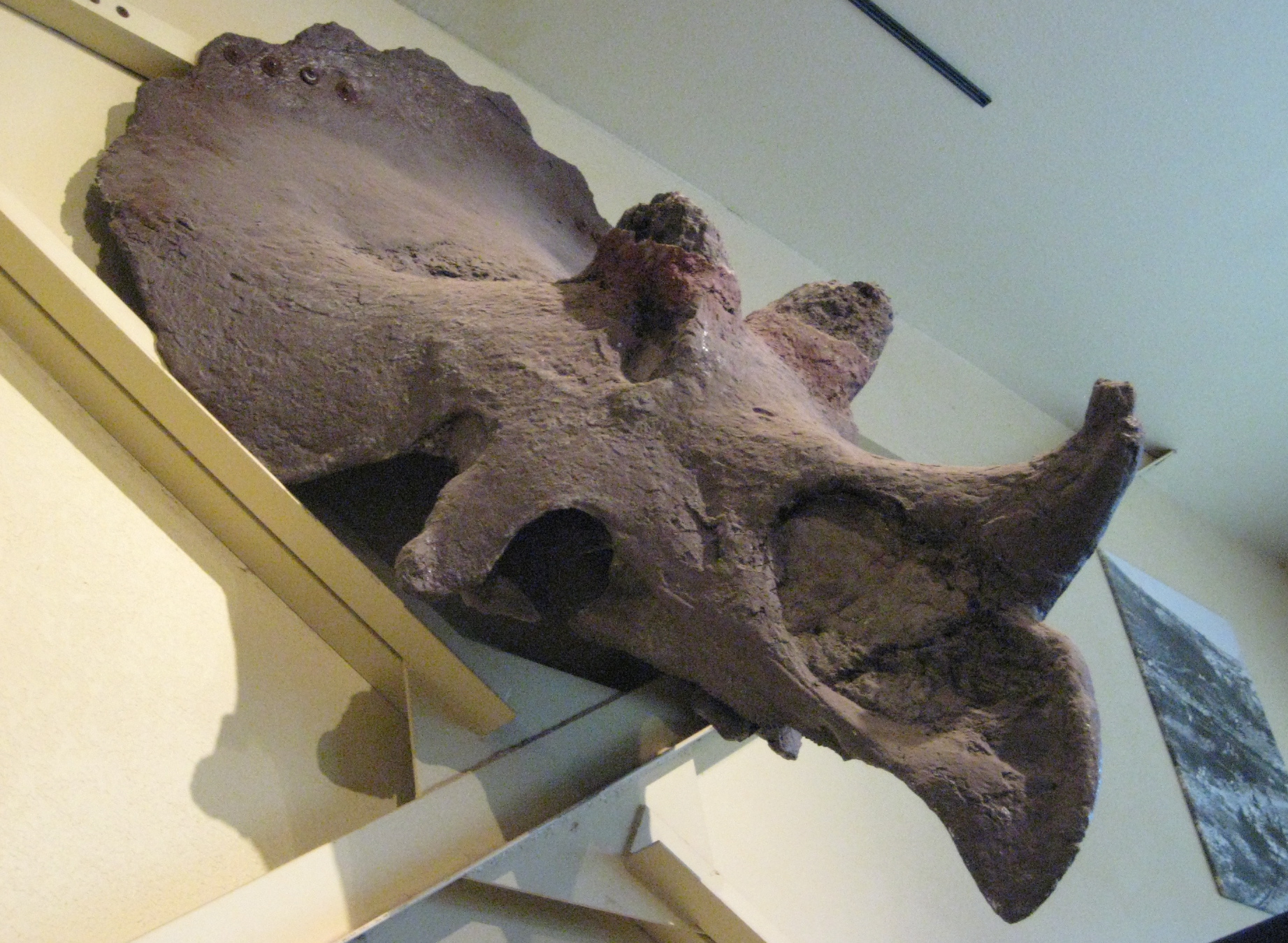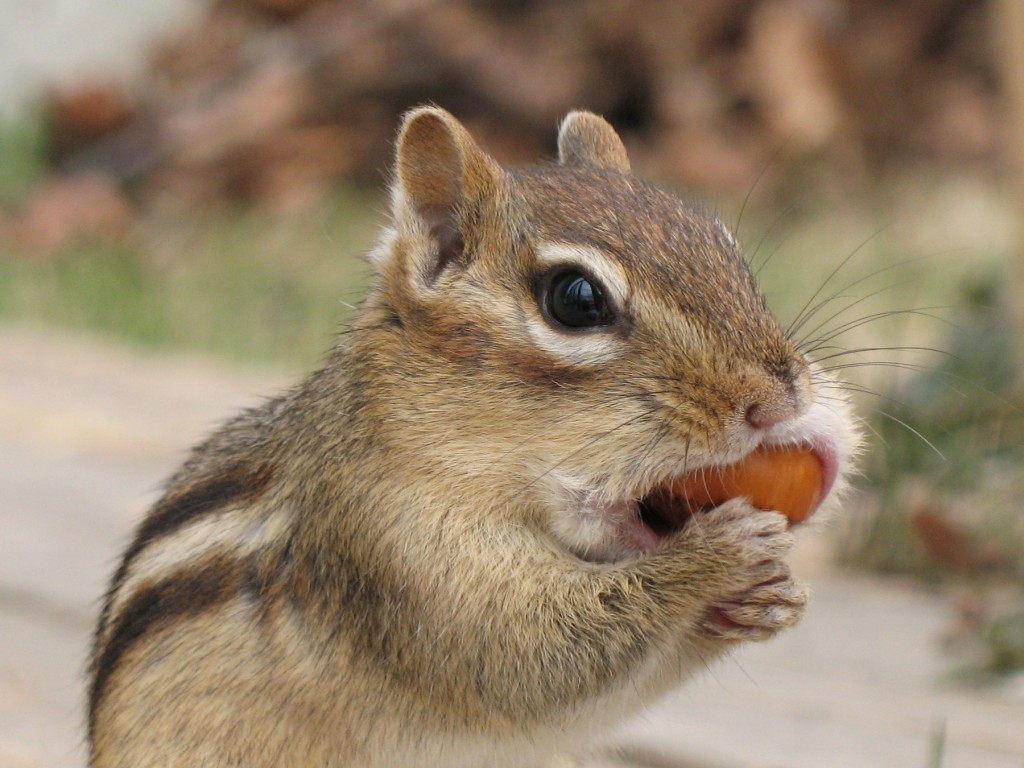|
Fruitafossor
''Fruitafossor'' was a termite-eating mammal endemic to North America during the Late Jurassic epoch (around 150 mya). The description is based on a complete skeleton of a chipmunk-sized animal. It was discovered on March 31, 2005, in Fruita, Colorado. It resembled an armadillo (or anteater) and probably ate colonial insects in much the same manner as these animals do today. Other skeletal features clearly show that ''Fruitafossor'' was not related to armadillos, anteaters, or any modern group of mammal. This indicates that specializations associated with feeding on ants or termites have independently evolved many times in mammals: in ''Fruitafossor'', anteaters, numbats, aardwolves, aardvarks, pangolins, and echidnas. Description In 2009, a study by J. R. Foster was published that estimated the body masses of mammals from the Late Jurassic Morrison Formation by using the ratio of dentary length to body mass of modern marsupials as a reference. Foster concludes that ''Fruita ... [...More Info...] [...Related Items...] OR: [Wikipedia] [Google] [Baidu] |
Paleobiota Of The Morrison Formation
The Morrison Formation is a distinctive sequence of Late Jurassic sedimentary rock that is found in the western United States, which has a wide assortment of taxa represented in its fossil record, including dinosaur fossils in North America. It is composed of mudstone, sandstone, siltstone and limestone and is light grey, greenish gray, or red. Most of the fossils occur in the green siltstone beds and lower sandstones, relics of the rivers and floodplains of the Jurassic period. (mostly from Foster 003 the higher-level classifications will vary as new finds are made. Plants Gnetales Arthropods Fish Although the paleoclimate of the Morrison formation was semiarid with only seasonal rainfall, there were enough bodies of water to support a diverse ichthyofauna. Although abundant, fish remains are constrained to only certain locations within the formation. Microvertebrate sites in Wyoming are dominated by fish remains. Indeterminate ray-finned fish remains have been recovered ... [...More Info...] [...Related Items...] OR: [Wikipedia] [Google] [Baidu] |
Jurassic
The Jurassic ( ) is a Geological period, geologic period and System (stratigraphy), stratigraphic system that spanned from the end of the Triassic Period million years ago (Mya) to the beginning of the Cretaceous Period, approximately Mya. The Jurassic constitutes the middle period of the Mesozoic, Mesozoic Era and is named after the Jura Mountains, where limestone strata from the period were first identified. The start of the Jurassic was marked by the major Triassic–Jurassic extinction event, associated with the eruption of the Central Atlantic magmatic province, Central Atlantic Magmatic Province. The beginning of the Toarcian Stage started around 183 million years ago and is marked by an extinction event associated with widespread Anoxic event, oceanic anoxia, ocean acidification, and elevated temperatures likely caused by the eruption of the Karoo-Ferrar, Karoo-Ferrar large igneous provinces. The end of the Jurassic, however, has no clear boundary with the Cretaceous and i ... [...More Info...] [...Related Items...] OR: [Wikipedia] [Google] [Baidu] |
Fruita, Colorado
The City of Fruita is a home rule municipality located in western Mesa County, Colorado, United States. The city population was 13,395 at the 2020 United States Census. Fruita is a part of the Grand Junction, CO Metropolitan Statistical Area and lies within the Grand Valley. The geography is identified by the bordering Colorado River (historically known as the Grand River) on the southern edge of town, the Uncompahgre Plateau known for its pinyon-juniper landscape, and the Book Cliffs range on the northern edge of the Grand Valley. Originally home to the Ute people, white farmers settled the town after founder William Pabor in 1884. Ten years later, Fruita was incorporated. Economically, it started out as a fruit-producing region, but today it is well known for its outdoor sports such as mountain biking, hiking, and rafting, its proximity to the Colorado National Monument, and its annual festivals. Fruita has been the winner of the Governor's Smart Growth and Development ... [...More Info...] [...Related Items...] OR: [Wikipedia] [Google] [Baidu] |
Mesozoic
The Mesozoic Era ( ), also called the Age of Reptiles, the Age of Conifers, and colloquially as the Age of the Dinosaurs is the second-to-last era of Earth's geological history, lasting from about , comprising the Triassic, Jurassic and Cretaceous Periods. It is characterized by the dominance of archosaurian reptiles, like the dinosaurs; an abundance of conifers and ferns; a hot greenhouse climate; and the tectonic break-up of Pangaea. The Mesozoic is the middle of the three eras since Cambrian explosion, complex life evolved: the Paleozoic, the Mesozoic, and the Cenozoic. The era began in the wake of the Permian–Triassic extinction event, the largest well-documented mass extinction in Earth's history, and ended with the Cretaceous–Paleogene extinction event, another mass extinction whose victims included the non-avian dinosaurs, Pterosaur, pterosaurs, Mosasaur, mosasaurs, and Plesiosaur, plesiosaurs. The Mesozoic was a time of significant tectonic, climatic, and evolut ... [...More Info...] [...Related Items...] OR: [Wikipedia] [Google] [Baidu] |
Termite
Termites are small insects that live in colonies and have distinct castes ( eusocial) and feed on wood or other dead plant matter. Termites comprise the infraorder Isoptera, or alternatively the epifamily Termitoidae, within the order Blattodea (along with cockroaches). Termites were once classified in a separate order from cockroaches, but recent phylogenetic studies indicate that they evolved from cockroaches, as they are deeply nested within the group, and the sister group to wood eating cockroaches of the genus '' Cryptocercus''. Previous estimates suggested the divergence took place during the Jurassic or Triassic. More recent estimates suggest that they have an origin during the Late Jurassic, with the first fossil records in the Early Cretaceous. About 3,106 species are currently described, with a few hundred more left to be described. Although these insects are often called "white ants", they are not ants, and are not closely related to ants. Like ants and some ... [...More Info...] [...Related Items...] OR: [Wikipedia] [Google] [Baidu] |
Morrison Formation
The Morrison Formation is a distinctive sequence of Upper Jurassic sedimentary rock found in the western United States which has been the most fertile source of dinosaur fossils in North America. It is composed of mudstone, sandstone, siltstone, and limestone and is light gray, greenish gray, or red. Most of the fossils occur in the green siltstone beds and lower sandstones, relics of the rivers and floodplains of the Jurassic period. It is centered in Wyoming and Colorado, with outcrops in Montana, North Dakota, South Dakota, Nebraska, Kansas, the panhandles of Oklahoma and Texas, New Mexico, Arizona, Utah, and Idaho. Equivalent rocks under different names are found in Canada. It covers an area of 1.5 million square kilometers (600,000 square miles), although only a tiny fraction is exposed and accessible to geologists and paleontologists. Over 75% is still buried under the prairie to the east, and much of its western paleogeographic extent was eroded during exhumation ... [...More Info...] [...Related Items...] OR: [Wikipedia] [Google] [Baidu] |
Mammal
Mammals () are a group of vertebrate animals constituting the class (biology), class Mammalia (), characterized by the presence of mammary glands which in Female#Mammalian female, females produce milk for feeding (nursing) their young, a neocortex (a region of the brain), fur or hair, and three ossicles, middle ear bones. These characteristics distinguish them from reptiles (including birds) from which they Genetic divergence, diverged in the Carboniferous, over 300 million years ago. Around 6,400 extant taxon, extant species of mammals have been described divided into 29 Order (biology), orders. The largest Order (biology), orders, in terms of number of species, are the rodents, bats, and Eulipotyphla (hedgehogs, Mole (animal), moles, shrews, and others). The next three are the Primates (including humans, apes, monkeys, and others), the Artiodactyla (cetaceans and even-toed ungulates), and the Carnivora (cats, dogs, pinniped, seals, and others). In terms of cladistic ... [...More Info...] [...Related Items...] OR: [Wikipedia] [Google] [Baidu] |
Chipmunk
Chipmunks are small, striped rodents of the family Sciuridae. Chipmunks are found in North America, with the exception of the Siberian chipmunk which is found primarily in Asia. Taxonomy and systematics Chipmunks may be classified either as a single genus, ''Tamias'', or as three genera: '' Tamias'', of which the eastern chipmunk (''T. striatus'') is the only living member; '' Eutamias'', of which the Siberian chipmunk (''E. sibiricus'') is the only living member; and '' Neotamias'', which includes the 23 remaining, mostly western North American, species. These classifications were treated as subgenera due to the chipmunks' morphological similarities. As a result, most taxonomies over the twentieth century have placed the chipmunks into a single genus. However, studies of mitochondrial DNA show that the divergence between each of the three chipmunk groups is comparable to the genetic differences between '' Marmota'' and '' Spermophilus'', so the three genera classifications ... [...More Info...] [...Related Items...] OR: [Wikipedia] [Google] [Baidu] |
Cockroach
Cockroaches (or roaches) are a Paraphyly, paraphyletic group of insects belonging to Blattodea, containing all members of the group except termites. About 30 cockroach species out of 4,600 are associated with human habitats. Some species are well-known as Pest (organism), pests. The cockroaches are an ancient group, with their ancestors, known as "Roachoid, roachoids", originating during the Carboniferous period, some 320 million years ago. Those early ancestors, however, lacked the internal ovipositors of modern roaches. Cockroaches are somewhat generalized insects lacking special adaptations (such as the sucking Insect mouthparts, mouthparts of aphids and other Hemiptera, true bugs); they have chewing mouthparts and are probably among the most primitive of living Neopteran insects. They are common and hardy insects capable of tolerating a wide range of Köppen climate classification, climates, from Arctic cold to Tropics, tropical heat. Tropical cockroaches are often much larg ... [...More Info...] [...Related Items...] OR: [Wikipedia] [Google] [Baidu] |
Ecological Niche
In ecology, a niche is the match of a species to a specific environmental condition. Three variants of ecological niche are described by It describes how an organism or population responds to the distribution of resources and competitors (for example, by growing when resources are abundant, and when predators, parasites and pathogens are scarce) and how it in turn alters those same factors (for example, limiting access to resources by other organisms, acting as a food source for predators and a consumer of prey). "The type and number of variables comprising the dimensions of an environmental niche vary from one species to another ndthe relative importance of particular environmental variables for a species may vary according to the geographic and biotic contexts". See also Chapter 2: Concepts of niches, pp. 7 ''ff'' A Grinnellian niche is determined by the habitat in which a species lives and its accompanying behavioral adaptations. An Eltonian niche emphasizes that ... [...More Info...] [...Related Items...] OR: [Wikipedia] [Google] [Baidu] |
Vertebrae
The spinal column, a defining synapomorphy shared by nearly all vertebrates, Hagfish are believed to have secondarily lost their spinal column is a moderately flexible series of vertebrae (singular vertebra), each constituting a characteristic irregular bone whose complex structure is composed primarily of bone, and secondarily of hyaline cartilage. They show variation in the proportion contributed by these two tissue types; such variations correlate on one hand with the cerebral/caudal rank (i.e., location within the backbone), and on the other with phylogenetic differences among the vertebrate taxa. The basic configuration of a vertebra varies, but the bone is its ''body'', with the central part of the body constituting the ''centrum''. The upper (closer to) and lower (further from), respectively, the cranium and its central nervous system surfaces of the vertebra body support attachment to the intervertebral discs. The posterior part of a vertebra forms a vertebral ... [...More Info...] [...Related Items...] OR: [Wikipedia] [Google] [Baidu] |









